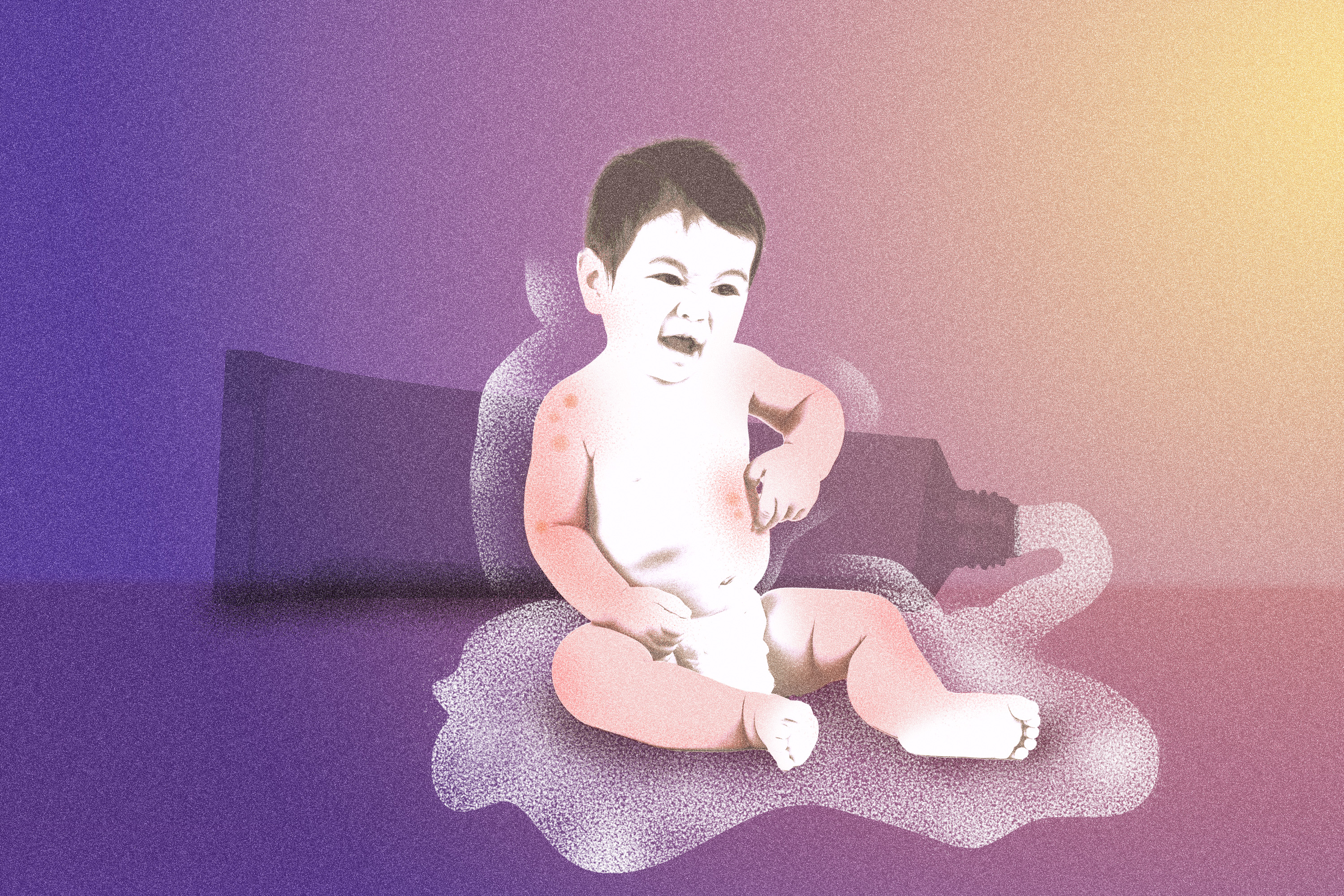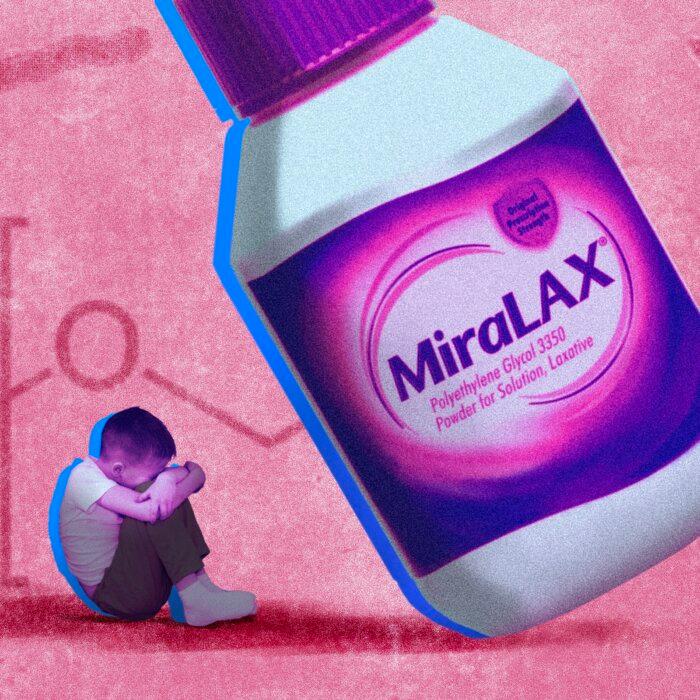Kate learned about topical steroid withdrawal when her son Alex stopped growing, and she took him off his eczema cream.
Alex’s eczema, also known as atopic dermatitis, began in infancy with small, itchy patches on his wrists and hands—a condition Kate, a seasoned nurse, was familiar with. Following the doctor’s advice, she applied a mild corticosteroid cream. The relief was temporary.
As weeks turned into months, the rash persisted and spread, leading doctors to prescribe stronger steroid creams. While Alex experienced brief relief, the condition worsened each time the topical steroids were reduced.
Kate came to suspect that the topical steroids did more harm than good, and she noticed Alex had been wearing the same-sized clothes for an unusually long time.



His growth chart confirmed stalled growth—an acknowledged side effect of prolonged steroid use. An endocrinologist diagnosed Alex with linear growth retardation and advised stopping the steroids, though his dermatologist insisted such cases were “too rare” to be likely.
Kate has asked her name to be withheld, and that of her son. Her decision to stop his medication was supported by medical professionals but is still controversial in some circles. Some experts view taking children with serious eczema off topical steroids as a form of neglect.
A Growing but Controversial Concern
Topical steroids are a cornerstone in dermatology, widely used to treat conditions like psoriasis and vitiligo. However, researchers have found that long-term use of steroids can itself trigger a skin condition, what one expert calls “topical steroid withdrawal syndrome.” This syndrome is distinct from the common side effects of steroid use, such as skin thinning and stretch marks.Stories like Kate’s continue to spread, and researchers are better documenting the characteristics of topical steroid withdrawal. Yet many dermatologists and their professional associations remain unconvinced.
Kate stopped giving Alex topical steroids in June 2013. Within 15 months, she said Alex’s skin was 80 percent clear. He was later prescribed UVB narrowband phototherapy, a treatment using UVB light to reduce skin inflammation. After six months, his eczema was completely gone.
In her search for answers, Kate found a video by Dr. Marvin Rapaport, a dermatologist and former clinical professor at UCLA. For decades, Rapaport has warned that prolonged topical steroid use can lead to stubborn, treatment-resistant eczema. He has authored nine peer-reviewed papers on the topic and states he has cured over 10,000 patient in the past 40 years.
The Association and the Academy
While the National Eczema Association recognizes topical steroid withdrawal (TSW), many frontline dermatologists, backed by the American Academy of Dermatology (AAD), remain unsure about the condition’s prevalence and underlying causes.Still, both reviews recognize the condition and suggest that it may stem from the misuse of topical corticosteroids.
Eczema or Withdrawal?
The National Eczema Association notes that approximately 9.6 million children in the United States struggle with eczema, a rate twice that of children in other countries. More than 7 percent of adults are also affected, with one in four reporting their symptoms first appeared in adulthood.
“Clinically distinct TSW symptoms included burning, flushing, and thermodysregulation,” notes the study. The researchers also noted metabolic abnormalities, particularly involving amino acids, and suggested that treatments like metformin and the herbal compound berberine might aid recovery.
People who had used topical steroids for months or years described “full body flushing” and symptoms in areas never treated with steroids, he said. They reported sagging skin folds and excessive peeling, which far exceeded typical eczema-related peeling.
While the authors of the pilot study noted that questions remain, they had one clear conclusion: “TSW is not eczema.”
“Erythema and skin pain or burning are the 2 most consistent clinical features of topical corticosteroid withdrawal in all patients,” wrote Mohta.


Disagreement Among Dermatologists
The term “topical steroid addiction” is contentious even among those who think topical steroids may be creating problems. Some suggest the term confuses the nature of the issue, while those like Rapaport believe it captures an essential dynamic in how people become physiologically dependent on drugs that offer little benefit.Rapaport’s concerns over topical steroids are shared by more researchers, doctors, and families now than a few decades ago, yet he remains an outlier among dermatologists.
Dr. Lio, a Harvard-trained dermatologist, says TSW is a complex condition.
“TSW represents a serious challenge in dermatology right now. I have no doubt that it is a real entity and that we need better tools to diagnose, treat, and most importantly, prevent it,” he told The Epoch Times in an email.
While some TSW symptoms differ from those of eczema, Lio notes there is overlap, which complicates diagnosis.
“It is not quite as straightforward as diagnosing a skin disease because it is more than that: It is a systemic syndrome. We still have much to learn about it,” Lio said. He refers to it as TSW syndrome—a collection of symptoms that consistently occur together and affect multiple parts of the body—a term he believes is crucial for advancing understanding and treatment of the condition.
Dr. Amy Paller, a dermatologist at Northwestern University’s Feinberg School of Medicine, is among a large number of dermatologists who remain skeptical about topical steroid withdrawal.
“I have never seen this in any of my patients,” she wrote in an email to The Epoch Times.
Paller said that TSW is extremely rare among the pediatric patients she treats. She emphasized the importance of moderate steroid use and vigilant monitoring to avoid adverse effects.
“My colleagues have not or have rarely seen it in children. That’s the bottom line,” she said.
Phobia or Side Effects
Patients experiencing systemic effects from topical steroids, or fearing such outcomes, often report feeling misunderstood or dismissed by health care providers.While the survey assesses patients’ beliefs, it does not capture their actual experiences with topical steroid use.
“Individuals with eczema may have substantial lifetime corticosteroid exposure, increasing the risk of corticosteroid-related side effects,” the study noted.
The research, surveying 1,889 adult eczema patients and 271 caregivers of children with eczema, found that 83 percent of adults and 64 percent of children reported worsening symptoms over time.
A key finding from the study was the extended duration of topical steroid use by many patients. According to the research, 75 percent of eczema patients use topical steroids daily, with half using them 15 to 30 days each month. Adults averaged 15.3 years, and children 3.6 years of continuous use.
The study found that prolonged and frequent corticosteroid use was linked to new symptoms and conditions, with many participants reporting withdrawal symptoms upon stopping treatment.


Problem of Prolonged Use
Those facing topical steroid withdrawal are fighting on two fronts, warns Kelly Barta, president and executive director of the Coalition of Skin Diseases and author of “To Eczema, with Love.”“You’re not just treating eczema. You’re treating eczema plus immune dysfunction,” she told The Epoch Times.
Barta, who began using these creams in her early teens, found herself “chasing eczema” across her body, requiring increasingly potent treatments. Eventually, she was forced to confront the severe withdrawal symptoms that followed her decision to stop using the creams.
“It felt like someone was stabbing me with knitting needles,” she said. The intense pain and debilitating condition left her bedridden for over a year. Eventually, the symptoms eased, and her skin began to clear.

Despite evidence of widespread overuse, the AAD offers no specific guidance on how long topical steroids should be used. Dr. Bruce Brod, a board-certified dermatologist, acknowledges this gap but said dermatologists are well-trained to prescribe steroids safely.
“Guidelines for inflammatory skin conditions contain language directed to safe and effective treatment regimens using topical steroids, including short duration use to prevent flares and side effects from prolonged use of high potency steroids,” Brod told The Epoch Times in an email.
Without specific guidelines on duration, treatment practices can vary widely. Brod noted the importance of educating patients on proper steroid use and balancing flare control with minimizing long-term exposure.
Family doctors and non-dermatologists, such as those in emergency rooms or urgent care, also prescribe topical steroids but may not be fully updated on the latest guidelines. This can lead to extended use and a higher risk of side effects, including steroid withdrawal. Ensuring all health care providers are informed on current recommendations can help reduce these risks, according to Brod.
“Every decision needs to balance the pros and cons and involve the patient in informed decision-making,” Brod said.
Decoding Dosages
Topical steroids frequently come without specific dosage guidelines, creating confusion over safe usage. Instructions often state, “Apply a thin layer only to the affected area,” yet don’t clarify what a “thin layer” or “affected area” means.Alex’s mother, Kate, shares these concerns. Steroid labels often advise, “Use as directed by a doctor,” but Kate says doctors don’t always provide specific guidance, leaving patients holding the bag.

Steroid potency can also vary depending on the patient’s age, skin condition, and the area of skin where the cream is applied.
A Diagnostic Dilemma
Skepticism about TSW means that many dermatologists don’t know how to diagnose it. While the National Eczema Association recognizes TSW as distinct from atopic dermatitis, the absence of formal diagnostic criteria complicates its identification and management.- Burning, stinging, or painful skin versus the more common symptom of itch, which is related to eczema
- A “red sleeve” pattern, defined as confluent or general redness, on the arms or legs, often accompanied by severe swelling compared with the “patchiness” often seen accompanying
- Substantial or escalating use of medium- to high-potency topical steroids or oral steroids
If approved, the code could be implemented by October 2025, potentially standardizing TSW diagnosis. ITSAN believes this would enhance TSW management, boost health care provider awareness, and improve data accuracy.

Weighing the Treatment Options
The National Eczema Society reports that 80 percent of children are expected to “outgrow” atopic dermatitis by adolescence or adulthood.
Uncertainty about the side effects of topical steroids may cause parents and physicians to hesitate when choosing how best to treat eczema.
However, at a list price of $3,803.20 per carton, these drugs are out of reach for many, and their long-term effectiveness is still being evaluated. The FDA notes that biologics like Dupixent can have side effects, including severe allergic reactions and eye issues such as pink eye and corneal inflammation. Other common side effects include reactions at the injection site, cold sores, and high white blood cell counts.
For most patients, treatment choices come down to a range of alternative remedies or topical steroids, though long-term users may eventually need help managing withdrawal symptoms.
According to Rapaport, patients undergoing withdrawal under a physician’s care often endure “tolerable” symptoms, allowing for some normalcy. Withdrawal treatments typically include medications for itching, burning, sleep issues, and anxiety, as well as psychological support.
Rapaport notes that recovery time from topical steroid addiction varies widely and is poorly defined, though most patients see significant improvement within 12 to 24 months.
A Lingering Question and Hope for the Future
Over the past decade, Alex has remained “100 percent” clear, with only mild spring flare-ups that are “nothing like the TSW-affected skin.” Kate recalled one dermatologist saying Alex had the “third worst case” of eczema she’d ever seen. She questioned why his condition worsened over three years of treatment but improved within 20 months of being off steroids.“I truly would love to know the explanation,” she said.
Amid the ongoing debate, some in the medical community are hopeful TSW will become a thing of the past.
“Good stewardship of corticosteroids and appropriate advancement to systemic (non-steroidal) therapies, as well as being respectful of patient wishes, should be enough to get us most of the way there,” said Lio.
He is optimistic that awareness of TSW is growing even as new drugs to treat eczema get closer to market.
“I am hopeful that TSW will be relegated to the history books in our lifetime.”














